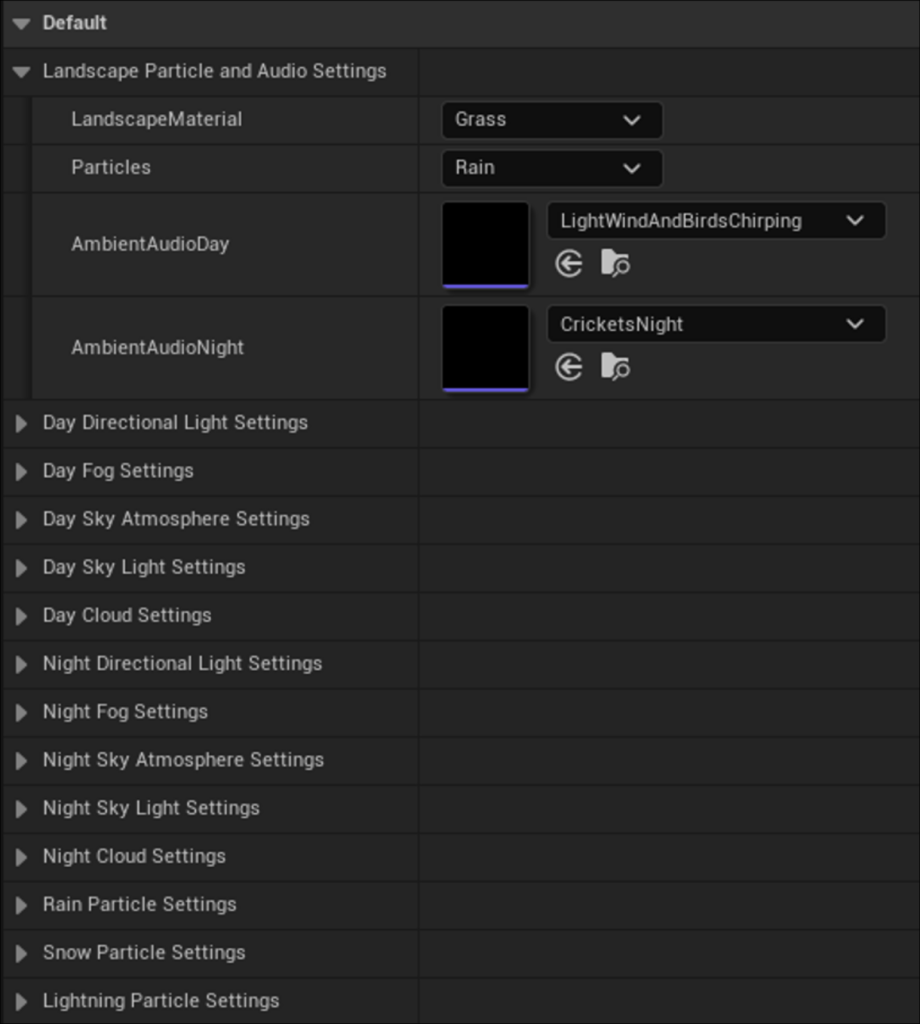DYNAMIC WEATHER SYSTEM
A modular, scalable, and highly customizable dynamic weather system inspired by Red Dead Redemption 2 that makes it easy to add a weather system and day/night cycle to your game.

Solo

7 Weeks

UE5

CONTRIBUTIONS
Research document
My research focused on how dynamic weather systems enhance player experience. I explored why players value realistic weather, how it fosters immersion, differences per genre, and what customization options developers would need in order to make the system fit their game’s aesthetic. Using Red Dead Redemption 2 as a case study, I analyzed its usage of static and dynamic weather, its weather types, their visuals and audio, the impact on environment and character, and the Day/Night Cycle.
It was important to keep in mind that I’m not just making systems; I’m making tools that can shape future stories and help players feel more connected to the environment. Therefore it is very important that the system offers the developer with plenty of options to tweak it to the game’s needs.
The Automated Day/Night Cycle
Design
The day/night cycle was designed for full customization, allowing control over cycle length, starting time, sky settings, and more. Developers can easily test and adjust settings, with options to fine-tune the sun, moon, stars, and clouds. The cycle works independently of the weather system and can toggle between automated and manual modes, ensuring flexibility for diverse project needs.
Implementation
The day/night cycle was implemented using a timeline to control the rotation and visibility of the directional lights for the sun and moon.
The timeline’s default one-second duration was scaled through calculations to match user-defined cycle speeds. The SkySphere material manages all textures including, the sun, moon, stars, and 2D clouds. Volumetric clouds have their own material.
Weather Types
Design
The weather types were designed to be modular and scalable. The goal was to make it as easy as possible for the developer to add new weather types while offering many customization options. I made several presets, which are shown in the image below.

Implementation
Weather types are implemented using Weather Data Assets, where each asset stores settings for specific weather conditions. The image to the right shows all the sections of the adjustable values. Developers can easily add or modify a weather type by creating a new data asset based on predefined structs, allowing for quick customization. This approach ensures a modular, scalable system that integrates smoothly with the overall weather system.

Dynamic Weather
Design
The dynamic weather system was designed for seamless automation and customization. Weather transitions are based on assigned probabilities, with options to adjust transition times, weather duration, and the starting weather type. Using the custom trigger box or function, settings can also be modified dynamically during runtime.
Implementation
The dynamic weather system uses a probability-based approach to determine weather changes. Developers assign probabilities to each weather type through a Weather Probabilities Table, which adds up all probabilities, picks a random number within the total, and matches it to a specific weather type. I also implemented a debug menu to simplify testing.
Niagara Particles & Materials
Design
The Niagara particles and materials were designed to provide a dynamic and immersive experience for the player without affecting the performance. Of course niagara effects are fully customizable per weather type, allowing developers to adjust values such as particle spawn rate, lifetime, gravity, color, size, and more.
Implementation
Using a custom Niagara module, I made the rain and snow particles spawn within a cylinder around the camera, ensuring they follow it while remaining performance-friendly and visually realistic. Lightning strikes were implemented similarly, with a larger range, but I also added logic to prevent strikes from spawning too close to the camera. Snow coverage is applied via a Material Function with a Scalar Parameter, transitioning smoothly through timelines.







